
October 16-23 live war map: Russia’s attempt to capture Chasiv Yar, Toretsk, Kurakhove, Selydove likely to fail
In the past week, Russia has ramped up its offensives around Kurakhove, focusing its biggest mechanized force there. Breaking through this front could lead to advances in other areas, especially toward Pokrovsk
Russian forces are at the doorstep of Kurakhove
55% of all fighting is taking place along the front line from Myrnohrad to Vuhledar. Russians have identified this section as a priority for breaking through in the Donetsk region and reaching the borders. Kurakhove currently holds a key position in their plan. Russia aims to achieve success here as quickly as possible and push as far west as they can, driving a wedge between Pokrovsk and Velyka Novosilka. However, this is more of a winter prospect rather than something imminent, unless the Russian offensive collapses sooner.
Throughout September and October, Ukrainian Defense Forces executed a highly successful withdrawal from the Nevelske "pocket," not only avoiding encirclement but also prolonging their rearguard actions, during which they destroyed a significant number of Russian troops. The new defense line, in which the Ukrainian Armed Forces and civilians place great hope, will be limited by the Vovcha River to the east, the cities of Hirnyk and Kurakhivka, and the nearby villages of Zoriane, Oleksandropil, and Izmailivka. Situated on higher ground and bounded by rivers and slag heaps, these fortified areas are expected to hold back Russian troops for a long time and drain their offensive capabilities.
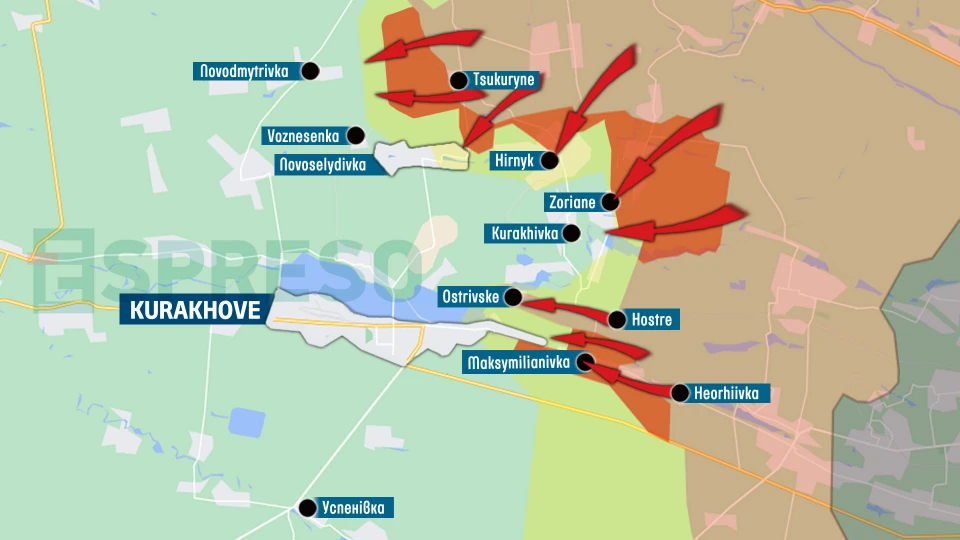
For now, Russians have approached Ukrainian positions from all sides and are launching simultaneous attacks on Zoriane, have entered the northern districts of Hirnyk, are bypassing Izmailivka from the west, and are conducting frontal assaults near Oleksandropil. However, it is likely that the main Russian strategy will be to bypass Ukrainian fortifications via Voznesenka and, moving south toward Kurakhove, cut off supply lines. How long the Ukrainian forces will be able to prevent Russian troops from organizing another semi-encirclement remains to be seen.
Meanwhile, following the breakthrough near Hostre in September, Russia managed to put pressure on Maksymilianivka not only from the east but also from the north. After two weeks of fighting, the village is almost occupied, and the Russian army is now able to launch assaults directly on the outskirts of Kurakhove. In fact, the past few days have marked the beginning of the battle for this city. Russian forces will likely continue frontal assaults from the east for some time, while waiting for developments in the southern and northern directions to execute their favored tactic of encircling Kurakhove.
Vuhledar direction
The northern direction will depend on holding the fortified positions in Hirnyk and Kurakhivka, while the situation in the south is developing even more slowly. After occupying Vuhledar, Russia is trying to break through to Ukrainian defensive positions in Bohoiavlenka and Ukrainsk, as well as gradually attacking villages located along the Sukhi Yaly River, with the goal of eventually reaching the Kurakhove – Velyka Novosilka highway. This week, Russians have almost completed the occupation of Kostiantynivka and have begun attacking the eastern and southern outskirts of Katerynivka. At this location they may attempt to cross the river in order to advance along both of its banks.
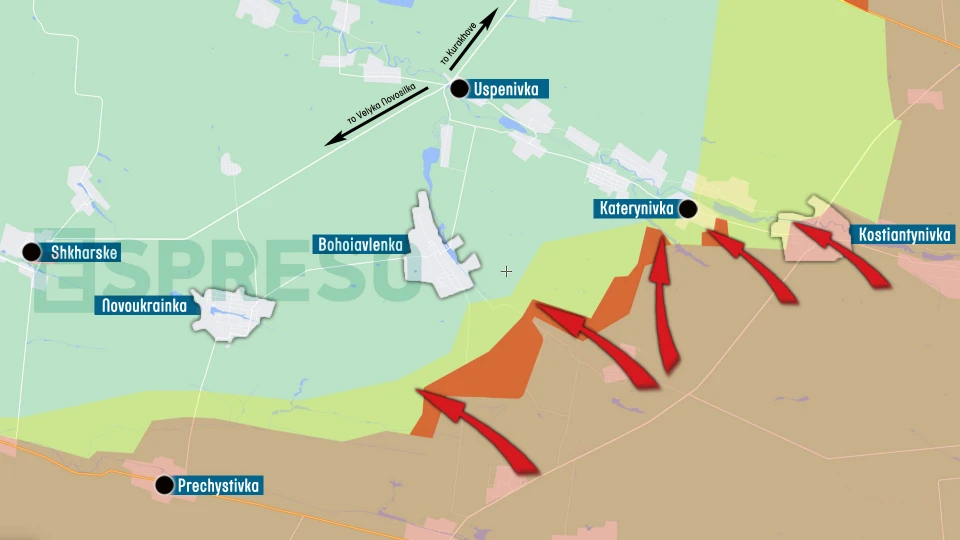
From the south, Russians have advanced 2.5 km toward Bohoiavlenka, and from the east, from the direction of Vodiane, by more than a kilometer. However, they still have more than 2.5 km to reach the village, and the open steppe terrain, along with weather conditions, will prevent them from making rapid progress until the frost sets in.
Selydove and Myrnohrad are holding back the offensive toward Pokrovsk
For over a month, Selydove has been the focal point of Russia’s main offensive potential in the Pokrovsk direction. Despite Russia beginning to infiltrate the city from the east and north, Ukrainian Defense Forces are holding the line, destroying entire Russian companies, sometimes even more, on a daily basis. Realizing that their frontal assault strategy has failed, Russian forces continue attempts to bypass the city from the north and south, aiming to encircle it near Vyshneve. This week, their progress amounted to less than a hundred meters on both fronts. However, a significant portion of the eastern part of the city remains in a gray zone due to constant infiltration by Russian infantry and their efforts to entrench themselves in buildings. The Ukrainian Defense Forces mostly eliminate these groups, though some manage to survive and hide, waiting to activate at a critical moment.
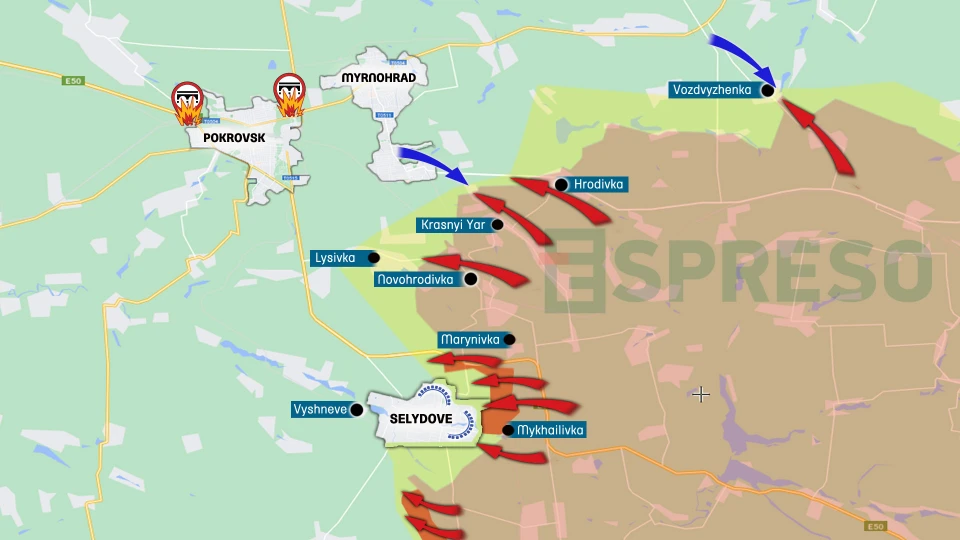
Russian forces have completed the occupation of Tsukuryne and continued their westward movement toward Novodmytrivka. Currently, the prospects for such an advance are unclear, but at any moment, they could turn north to join the assault on Selydove or south toward Kurakhove.
The "meat raids" on Myrnohrad have brought Russia nothing but losses in manpower, similar to their local attempt to advance near Vozdvyzhenka. It is not yet clear whether this was a one-off action or an attempt to relaunch a large-scale offensive on the Pokrovsk-Kostiantynivka highway.
Dangerous breakthrough is occurring in Chasiv Yar
The fortress city of Chasiv Yar has been holding back the invading Russian troops for more than a year since the fall of Bakhmut. However, this week, significant cracks have appeared in Ukrainian defense. If they cannot be quickly sealed, the consequences will be catastrophic, and the front line will move toward the outskirts of Kramatorsk, Sloviansk, and Kostiantynivka. Initially, the Russian forces had two footholds on the right bank of the canal: near Kalynivka and Ivanivske, along the road to Kostiantynivka. But within a few days, another breach appeared: Russia seized the eastern outskirts of the Zhovtnevyi district. Currently, the most critical situation is the one-and-a-half-kilometer advance of Russian forces along the Bakhmut-Kostiantynivka highway. For now, this breach does not show signs of expanding, so there is a chance to cut it off. The coming weeks will show whether the Ukrainian General Staff can close these breaches and restore the front line along the Siverskyi Donets-Donbas Canal.
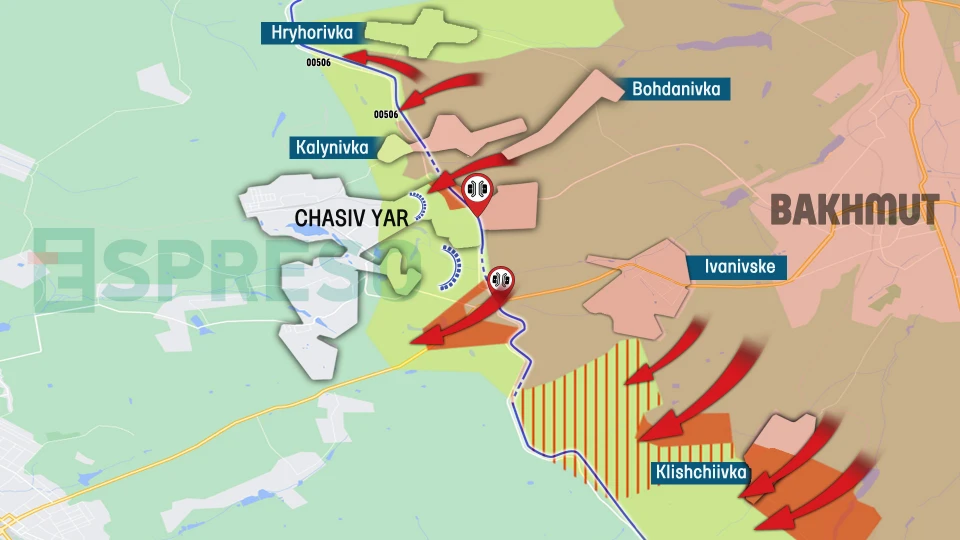
An additional negative factor in this area of the front is Russia’s creeping advance toward the heights near Klishchiivka. Last year, during the summer counteroffensive, the Ukrainian Armed Forces recaptured these heights, which significantly eased the defense of Chasiv Yar. However, losing them could accelerate the city's fall.
Russian forces split the front in half in Kharkiv region
The creeping Russian advance from Pishchane to the Oskil River has completed its months-long 10-kilometer marathon, reaching a climax – Russians have reached the river and split the front in eastern Luhansk in half. Now, the fighting will be viewed in terms of the offensive on Kupyansk and the Lyman-Borova direction. While Russia hasn't made significant progress in the latter, the situation around Kupyansk has grown more ominous. In Kruhliaivka, the invading Russian forces are trying to expand their foothold on the riverbank, but the Ukrainian Armed Forces are still defending the southern part of the village and attempting counterattacks. South of Kupyansk, after several attempts, Russian forces managed to break through the forest along the Oskil River, bypass Ukrainian defensive positions in Synkivka, and reach the outskirts of Petropavlivka, from which they were pushed out by Ukrainian forces last week.
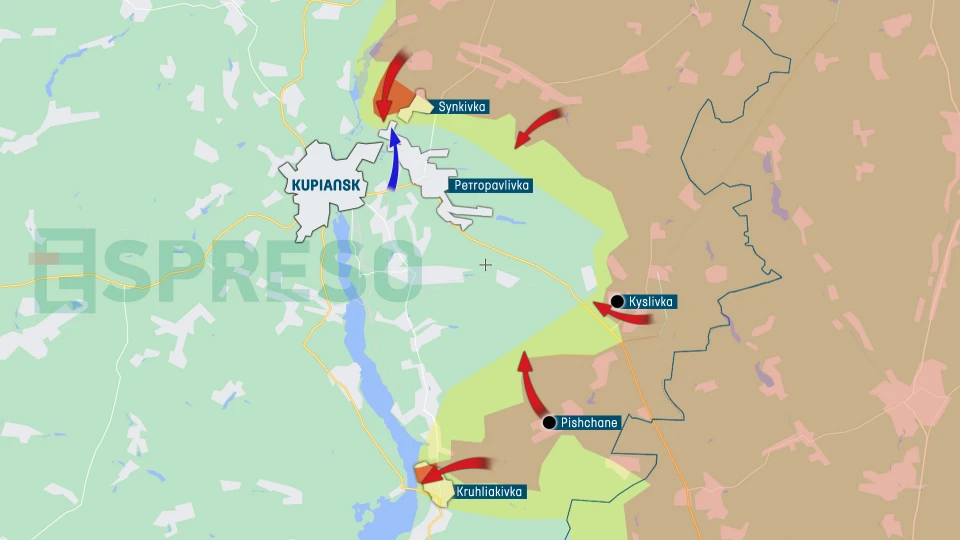
Near the Borova-Svatove highway, Russian forces have crossed the line between Kharkiv and Luhansk regions, advanced 2.5 km, and occupied the village of Vyshneve. They will likely continue moving south to reach the highway and outflank Ukraine’s defensive line, which is holding back Russian troops on a small portion of Luhansk land.
Further south, Russians are methodically pushing out Ukrainian defense forces from the left bank of the Zherebets River between the villages of Nevske and Makiivka. However, more alarming is their advance from Nevske along the river toward our fortified positions in Terny and Yampolivka, where the Ukrainian defense forces have been holding back frontal attacks for over a year. In just a few days, Russians managed to advance nearly 3 km, occupying the village of Novosadove and taking significant territory to the east of it. A new phase of battles for Terny is likely to begin in the coming weeks, which will be crucial for the Lyman front.
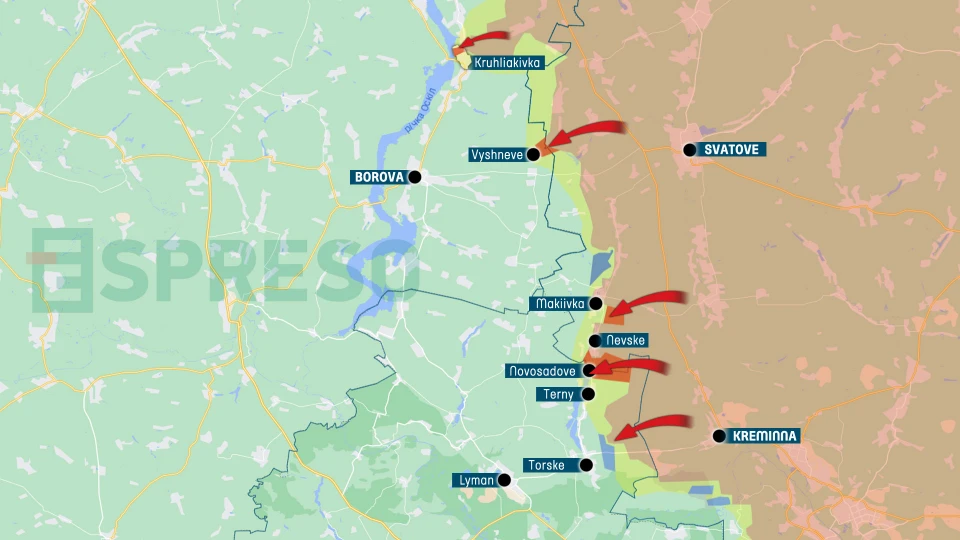
At the same time, in northern Kharkiv, Ukrainian forces continue to push Russian troops out of the positions they seized in May. While there is no positive news from Vovchansk, Ukrainian forces have pushed Russians back near Lypsti. Unexpectedly, Ukraine’s breakthrough at the border near Zhuravlivka, through which the road to Belgorod runs, proved successful. Here, the defense forces have managed to secure their positions, creating potential future flanking pressure on Russians, who previously sought to advance from Hlyboke to Lypsti and further toward Kharkiv.
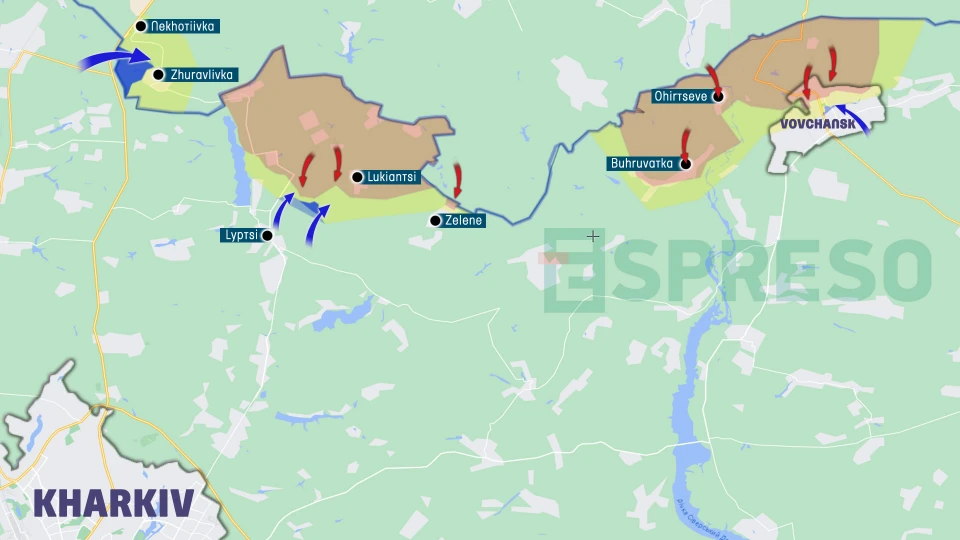
Russian counteroffensive in the Kursk region has stalled
Over the past seven days, despite Russia’s victory claims, the pace of their offensive has significantly slowed. Ukrainian forces managed to conduct an organized retreat from Olgovka and Liubimovka but engaged in battles for Novoivanovka and Zeleny Shlyakh, preventing a breakthrough to Malaya Loknya. After retreating to the western bank of the river near Darino, the Ukrainian Defense Forces held back Russia’s advance on the village itself. Ukrainian heroes successfully stopped Russian forces on the eastern front, though they withdrew from some northern positions. At this stage, Ukraine’s operation has fully shifted from an offensive to a defensive stance. However, there is still no stable front line, allowing the Ukrainian Armed Forces to carry out regular local counterattacks, which are quite damaging. For example, in the northern direction, the uncontrolled "gray zone" extends over 8 km deep, and in the west, it exceeds 12 km. This provides operational space for Ukrainian forces and prevents Russians from advancing quickly, as they regularly face flanking or rear attacks.
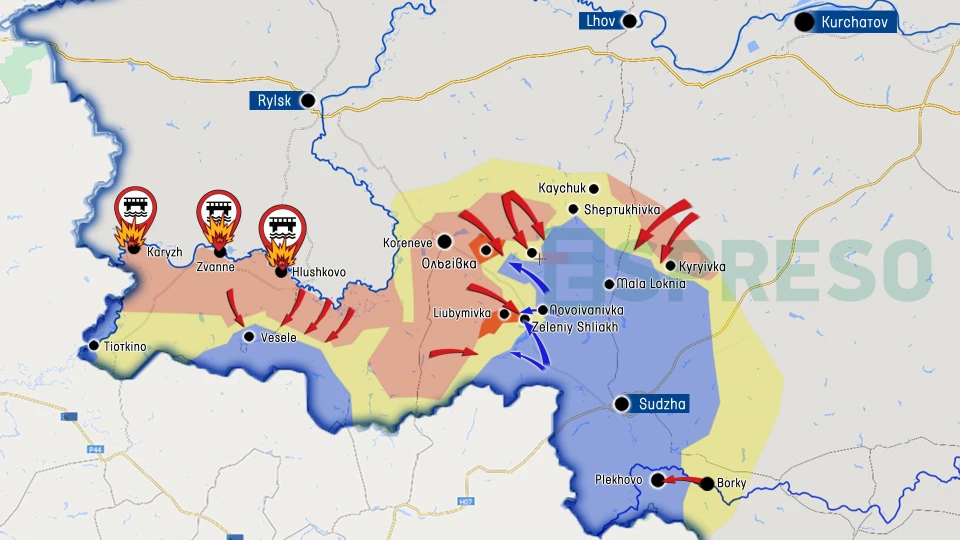
Overall, the intensity and multi-directional nature of the Russian offensive makes it seem as though they have unlimited resources. However, the high casualty rates from their human-wave assaults, the limited influx of new reinforcements, and the involvement of North Korean fighters indicate that this is far from the case. In the near future, we will likely see either a reduction in their ambitions or Russian forces overextending themselves on certain sections of the front.
The maps were created using data from the Ukrainian Armed Forces' General Staff and other verified sources. However, they are approximate and conditionally reflect trends in the war zone.
- News











































